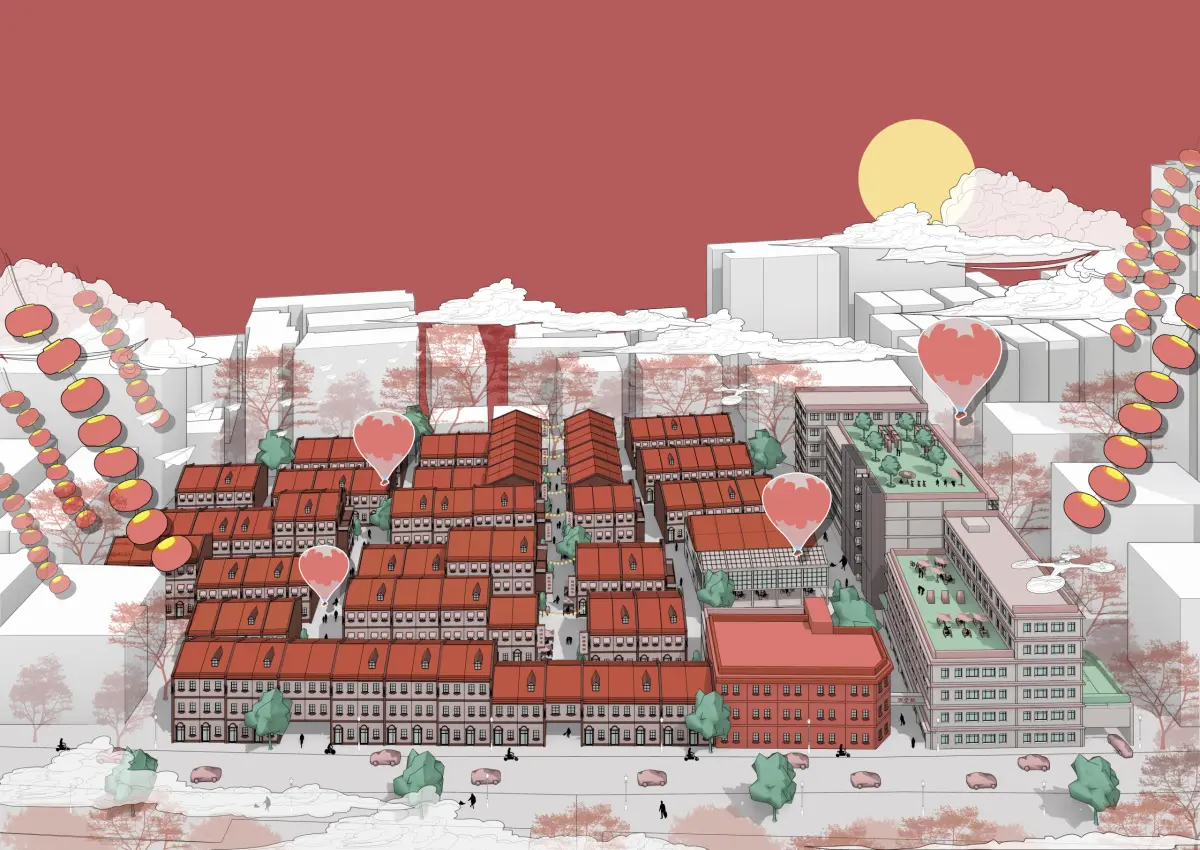
Return 1998 - Building a Sustainable Tianzifang
BY Jiao Yiying
SUPERVISED BY Assoc. Prof. Johannes Widodo (Dr.)
STUDIO THEME ASIAN MODERN HERITAGE IN THE CONTEXT OF CHANGE: CONSERVATION FOR SUSTAINABILITY
Abstract
The transformation of historical urban areas into tourist destinations is a common strategy deployed by the government as an urban renewal project to revitalise the conservation area. This process often leads to tourism gentrification. In the case of Tianzifang in Shanghai, it developed from a renovated traditional residential area in the former French Concession area of Shanghai in the first quarter of the twentieth century. It is a community-initiated project to conserve the Shikumen residential houses and transform them into a creative and innovative industry for artistic consumption. However, after rezoning as a tourist destination, the influx of business activities caused disturbances to the original residents. In addition, the increase in rent also led to the expulsion of artists. Hence, today’s Tianzifang is facing a crisis of tourism gentrification which may lead to a hollow commercial zone without the Shikumen spirits.
This thesis provides an overall framework to revive the art industry, retain the neighbourhood identity and build a sustainable community in Tian Zi Fang. The existing factories will be adaptive-reuse as new residential apartments to welcome artists and young professionals to settle into the district. The red iconic building is further programmed as an art academy to facilitate community engagement in the exchange of skills and knowledge. In addition, a facade system is introduced to empower the artists to showcase their artworks. Although the pandemic (Covid-19) has severely impacted the tourism industry in Tian Zi Fang, is also giving the new opportunity to transform and re-introduce artists and young professionals back into the neighbourhood. It is not only about conserving the buildings, it is to conserve the communities.
Supervisor Comments
Rather than going all-in on gentrification or tourism-based development, as in the Xintiandi model, the thesis on the urban regeneration of Tianzifang in Shanghai, China, proposes mix-used mix-population conservation and redevelopment by retaining the majority of the existing community and adhering to the principles of cultural authenticity, social inclusivity, architectural integrity, and economic viability. The neighbourhood’s familiarity is preserved, but a new form of apartment for younger and more wealthy inhabitants is introduced to boost the area's economic and cultural vibrancy. The concept provides an intriguing alternative to China's urban redevelopment efforts.
- Assoc. Prof. Johannes Widodo (Dr.)